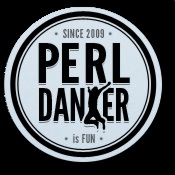| All About Dancer - In Conversation With Sawyer X |
| Written by Nikos Vaggalis |
| Thursday, 29 May 2014 |
|
Nikos Vaggalis talks about the Dancer Perl Web-framework to one of its core devs, Sawyer X. The conversation isn't limited to Dancer, however; Sawyer also gives his opinion and knowledge on finer grained aspects of the craft that is developing for the Web, such as the advantage of routing over query strings, MVC vs Routes, and Perl vs PHP vs Ruby.
NV: The term might be overloaded, but is Dancer an MVC or should I say a Route-based framework ? What’s the difference? SX: Usually MVC frameworks are defined by having a clear distinction between the model (your data source, usually a database), the view (your display, usually a template), and the controller (your application code). While Dancer helps you to easily separate them (such as providing a separate directory for your templates called “views”, by default), it doesn’t go as far as some other frameworks in how much it confines you to those conventions. I like to describe Dancer as “MVC-ish”, meaning it has a very clear notion of MVC, but it isn’t restrictive. If you’re used to MVC, you will feel at home. If you’re not, or don’t wish to have full-fledged MVC separation, you aren’t forced to have such either. Most web frameworks use what I would call "namespace-matching", in which the path you take has an implicit translation to a directory structure, a function, and the optional arguments. For example, the path /admin/shop/product/42 implicitly states it would (most likely) go to a file called Admin/Shop.pm, to a function called product, and will provide the parameter 42 to the function. The implicit translation here is from the URL /admin/shop/product/42 to the namespace Admin::Shop::product, and 42 as the function parameter. Route-based frameworks declare explicitly what code to run on which path. You basically declare /admin/shop/product/$some_idwill run a piece of code. Literally that is it. There is no magic to describe since there is no translation that needs to be understood. NV: What is the advantage of routing and why the traditional model of query strings is not enough? SX: The route-based matching provides several essential differences:
The declarative nature of route-based frameworks are quite succinct and dictate which code to run when. As explained, you are not confined to any structure. You can just settle for a single line: get ‘/admin/shop/product/:id’ => sub {…}This provides a lot of information in a one line of code. No additional files, no hierarchy. It indicates we’re expecting GET requests which will go to /admin/shop/product/:id. The :id is an indication that this should be a variable (such as a number or name), and we want it to be assigned the name id so we could then use it directly. When that path is reached, we will run that subroutine. It really is that simple. We could reach that variable using a Dancer keyword, specifically:
NV: Dancer is a complete feature-rich DSL. Does this mean that I write code in a dedicated language and not Perl? SX: All the web layer done through Dancer can be done in the DSL, but the rest of your application is done in Perl. Dancer just provides a comfortable, clean, beautiful language to define your web layer and to add parts to it (like cookies, different replies, template rendering, etc.). In Dancer2 the DSL is built atop a clean object-oriented interface and provides nice keywords to it. That is really what a web framework should do: provide a nice clean layer on top of your application. I guess a better way would be to say you write your code in Perl with dedicated functions that look nicer.
NV: You released Dancer 2 at the end of April. Was it a complete re-write and why? What shortcomings of the first version does it address ? SX: Dancer 2 is indeed a complete rewrite of the code, and for good reason. Dancer started as a fork of a fun web framework in Ruby called Sinatra. The founder of Dancer, Alexis Sukrieh, being a polyglot (programming in both Perl and Ruby), had used Sinatra, and wished to have a similar framework in Perl. As Dancer evolved through its users and community, gaining numerous additional features, it became apparent that some of the original design decisions regarding architecture were a problem. Specifically, engines, which are the core tenants of Dancer, are all singletons. This means every Dancer subsystem (and consequently, every code you write in Dancer in the same process) will share the same engine. An interesting example is the serializer. This means that one piece of code in which you want automatic serialization would require all your other pieces of code to work with serialization. You cannot control that. When we realized we could not force Dancer to do the right thing when it came to engines, we resorted to rewriting from scratch. This allowed several improvements: using a modern object system (Moo), having contextual engines and DSL, and decoupled mini-applications, called Dancer apps.
NV:There is a lot of talk on Plack/PSGI. What is it and what is the advantage of hooking into it? SX: PSGI is a protocol, which means it’s literally a paper describing how a server and application should speak to each other. It includes the parameters each expects and how they should respond. In essence, it’s an RFC for a new standardized protocol. Plack is a set of tools for writing PSGI applications and servers. We can use Plack as reference implementation, or as actual utilities for working with any layer of the PSGI stack, whether it’s the server or the client. PSGI, inspired by Python’s WSGI and Ruby’s Rack, has many qualities which rendered it an instant success: it’s simple, understandable, works across web servers, includes advanced features such as application mounting, middlewares, long polling requests, and even asynchronous responses. This deemed Plack/PSGI a solid foundation for writing web servers and web frameworks. All major web frameworks in Perl support PSGI, and many web servers started appearing, offering ranges of features from pre-forking to event-based serving: Starman, Twiggy, Starlet, Feersum, and many more.
NV: Dancer and web services, where do I start ? Conceptually, is REST only about web services ? SX: While REST (REpresentational State Transfer) is not limited to web services, it’s most widely used in that context. It’s a declared structure with which you can define and provide a consistent and understandable web service. As Dancer tries to be opinionated in moderation, it provides a plugin (Dancer::Plugin::REST and Dancer2::Plugin::REST) to help you go about defining RESTful routes. It helps you to easily define resources in your application so you get serialization and routes easily set up. Sometimes it’s hard for me to get used to new tools, so I haven’t used that plugin yet. I generally define my own paths for everything. While I suggest you take a look at it, I should probably do the same.
NV: What’s in the project’s wish-list, where is it heading at, and what can we expect in the future? SX: We’re focusing on several issues at the moment, which all seem to be congruent with each other: transition users to Dancer 2, overhaul the documentation, improve our test coverage, further decouple internal entities, streamline our coordination, and strip code further. We’ve made a lot of progress recently, much of it thanks to new core members, and more corporate companies (such as Booking.com) sponsoring hackathons, allowing us to focus more time on these. The attention we receive from our community is invigorating, and pushes us to continue work on the project, and invest time in it. It gives us an insight on how worthwhile it really is, and it makes our work a pleasure. NV: Perl vs PHP vs Ruby vs language X, for the web. Why Perl has fallen out of favour with web devs and what can be done about it? SX: While I have been working with Perl for a long while, and started back when CGI was pretty much it, others have much more experience, and might be able to answer this question better than I can. This is my rough reasoning, and I may be completely off on this. I believe the downfall of Perl as the dominating web language was due to our apathy at the time. As soon as we ruled the web with CGI we were lulled into a false sense of security in that position. In the mean time, other languages were trying to get their bearings and come up with something that could compete with it. It took some time, but they came up with better things, while we pretty much stalled behind. WSGI was done in Python. Then Ruby’s Rack came around. It took some time until we realized those were good and we should have that too, finally provided by Miyagawa as PSGI/Plack. Now our problem is that a lot of people are still not moving onwards to it, and are stuck with arcane methods of web programming, not understanding the value of moving forward. It’s important to remember that no single language can truly “rule” the web anyway. Perl had its glory days, and they are over. Then PHP had its, and it was over as soon as people realized PHP is not even a real language, and so happened with Ruby and with Rails. Others will have their turn for 15 minutes of fame, and that will be over as well. We will eventually end up with multiple languages (and PHP) and a multitude of web programming abilities, which is a bright future for all of us – except those who will have to work with PHP, of course. The crucial bit is not to stay behind the curve on new developments, and to push to create new things where appropriate. We shouldn’t just relax with what we have, we should always demand more of ourselves and try and create it, and not wait for other languages to say “hey, this sucks, let’s try fixing it”. That’s what we’re known for, so let’s get back to that. An extended version of this conversation originally appeared as a three-part series on the JosetteORama blog.
Other Perl-related interviews by Nikos Vagallis: Catalyst And More - An Interview With Matt Trout Where is Perl Heading? Interview with Jonathan Worthington Perl 6 and Parrot - In Conversation with Moritz Lenz Perlito - An Interview With Flávio Glock Niecza - Perl 6 Implemented in .NET More InformationTo be informed about new articles on I Programmer, install the I Programmer Toolbar, subscribe to the RSS feed, follow us on, Twitter, Facebook, Google+ or Linkedin, or sign up for our weekly newsletter.
Comments
or email your comment to: comments@i-programmer.info
|
| Last Updated ( Thursday, 29 May 2014 ) |




